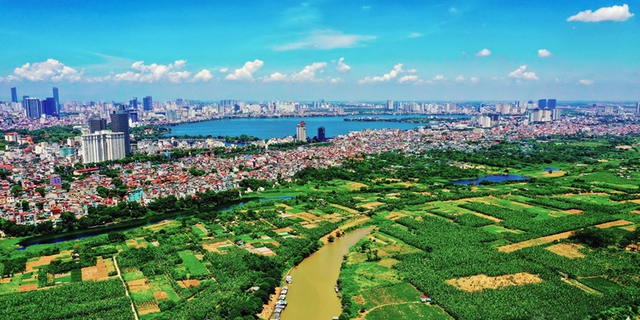Viet Nam targets to have 5 cities of international stature by 2050
VGP - Viet Nam strives to develop at least five cities of international stature by 2050, serving as focal points for enhancing linkages and development with regional and international networks.

Deputy Prime Minister Tran Hong Ha has signed a Decision approving the master plan for urban and rural areas in the period 2021-2030, with a vision to 2050.
Accordingly, by the end of this decade, the Government targets to speed up and improve the quality of urbanization, develop the urban and rural system in a more effective and comprehensive manner, build synchronous and modern infrastructures and create a healthy, climate-resilient and environmentally friendly living environment.
The Government also aims to enhance comprehensive and sustainable rural development associated with urbanization, synchronous infrastructure and social services while preserving and promoting the national cultural identity of each region.
Rrbanization rate is projected to reach over 50 percent by 2030 and 70 percent by 2050.
By 2030, the number of urban areas nationwide is set at about 1,000-1,200, accounting for some 85 percent of the national GDP.
Meanwhle, it is anticipated that over 90 percent of communes will meet the standards of new rural areas, with 50 percent achieving advanced new rural areas.
Among the current five centrally-run cities, Ha Noi and Ho Chi Minh City are planned to become special urban areas by 2030 while Hai Phong, Can Tho and Da Nang are national grade I cities.
Eight provinces are oriented to become a centrally-run city from now until 2030 including Thua Thien-Hue, Khanh Hoa, Bac Ninh, Ba Ria-Vung Tau, Quang Ninh, Ninh Binh, Hai Duong and Binh Duong.
There are 42 grade I cities nationwide, including 11 in the Red River Delta, five in the Northern midlands and mountainous region, seven in the North Central Coast, three in the Central Highlands, seven in the Southeast and five in the Mekong Delta./.
